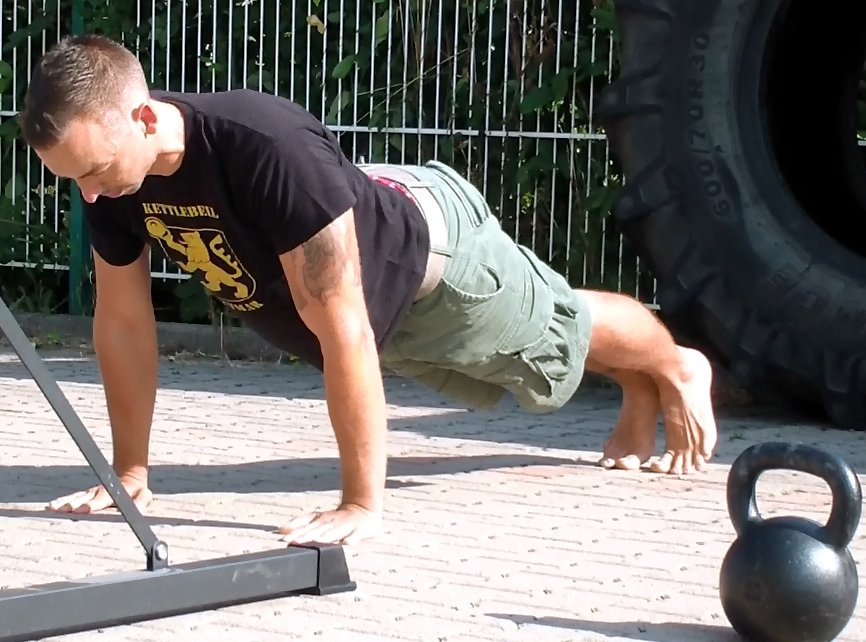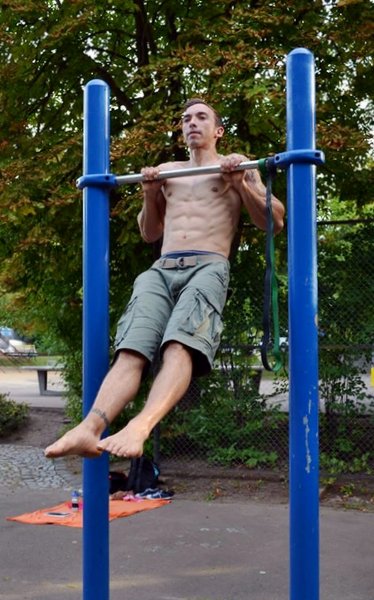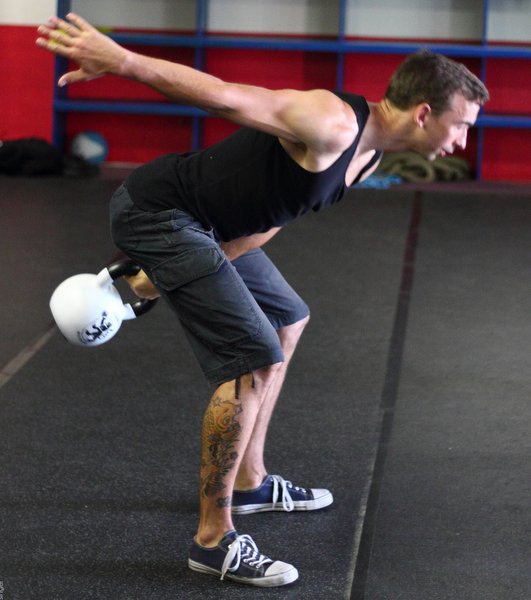
There are many philosophies out there when it comes to improving performance and mastering training efficiency. The following post is about two things that changed my life completely.
Part 1: Fundamental Human Movements
When I stumbled upon kettlebells a few years ago on the Internet, one thing came to mind–kettlebell training is always training of the entire body. Back then, like many people, I used to train isolated muscles and had felt okay doing this for about ten years. When I heard ‘full body training’ I immediately thought about training schedules for beginners. In every forum it seemed like beginners started their training with full body exercises and then switched to split training later. The most popular splits were chest and biceps. On certain days, you only attack biceps and/or chest muscles nicely isolated with tons of exercises.
Through constant research about kettlebell training, one day I stumbled upon Dan John’s The Fundamental Human Movements. His philosophy was suddenly all about training movements instead of training muscles.
Train movements instead of muscles!
At first this didn’t make any sense to me at all. How exactly am I supposed to train movements? It took me a while to understand what he was writing about, and the advantages of this training philosophy. How could these movements be all you ever need to become more fit than the average Joe or Jane?
Here’s the “secret”:
The fundamental movements are push, pull, hinge, squat and loaded carries.
But isn’t this another split and you’ll train isolated muscles again? Not really. Take a look at the recommended exercises for each movement and you’ll see that your entire body is always incorporated and trained, only the focus changes. Here are these fundamental movements and some exercise examples:
Push: push up, military press, push press,
Pull: row, pull up
Hinge: hinge with added weight (sandbag, kettlebell, etc.), deadlift, one-legged deadlift, kettlebell swing, clean, snatch, jumps (vertical and horizontal)
Squat: goblet squat, front squat with kettlebells, squats with barbells
Loaded Carries: waiters walk, suitcase walk, rack walk, press walk, farmers walk, double rack walk, pulling or pushing sleds, cars, etc.
As you might imagine, “push” exercises are mostly favored by everybody. Bench pressing is likely to be a lot of people’s favorite exercise and unfortunately always has priority before squats, pull ups and hinges. Just take a look around in your local fitness studio and try to find out which machine is most frequented.
As for most of the people who hear about the fundamental movements for the first time, it’s now time to get back into balance. It was also like that for me in the beginning. Dan John recommends prioritizing the fundamental movements like this:
- Loaded carries
- Squat
- Hinge
- Pull
- Push
He argues that he can change your life with loaded carries in three weeks. Here is an example: in his book Intervention he describes a client who was already close to mastering all of the fundamental movements. Dan John could only teach him a little bit here and there about a few movements. But, when it came to loaded carries, it turned out that this athlete had never trained with them before. So they worked together on loaded carries and the results were extreme in a very short time. Near the end of my “traditional” training time in a fitness studio, I always brought my own kettlebell with me. I used to work in a studio as a trainer for rehabilitation and every time I finished working, I fetched two kettlebells and carried them across the studio. I trained in the evenings and the girls and guys on their ergometers were always giving me puzzled looks!
But back then, I recognized that I was getting the same performance improvements that Dan John describes in his book. This is one of the reasons I fell in love with kettlebell training and how this training philosophy changed my life.
But, you don’t have to just carry a kettlebell! Go out there and look for something that you can lift and carry and then do it! Do this for three weeks and see if your life changes.
Part II: Training in Opposite Planes of Motion

Hearing about the five fundamental human movements is a good start, but only pays half of your rent (German saying). If you ask yourself how you can use these movements together into an effective training schedule, carry on, because:
Training in opposite planes of motion is the most effective way to make your training more efficient!
Why? Because you will learn to do more and how to do it more efficiently in the same amount of time!
What are the planes of motion? Basically you have top and bottom, front and back, up and down and reverse.
Once you understand which direction, plane and axis corresponds with each fundamental movement, you are the big time winner. With this, you can easily combine the right exercises to train the whole body without ever missing any part of your body.
Here is a list of some exercises split into the fundamental movements. The phase where the most strength is required defines the direction.
Push
- Focus on the front of the upper body
- Directions: forward (push up), up (kettlebell press)
Pull
- Focus on the back of the upper body
- Directions: back (rows), down (pull ups)
Hinge
- Focus on the back of the lower body
- Directions: forward (deadlifts)
Squat
- Focus on front of the lower body
- Directions: up (front squat)
Loaded Carries and Groundwork
- Focus on total muscle interaction from up to downwards and front to backwards
How can you use these movements and planes to make your training (more) efficient?
The answer is supersets, they are the best way to save time during training efficiently. Supersets are movements or exercises executed consecutively without a break between them. Here is an example of a superset, where lower and upper body alternate and frontside and backside are focused in turns.
Example: Deadlift (backside lower body) in a superset with press (frontside upper body)
So although you train your whole body with these two exercises, the focus alternates between these two, giving you ‘active rest’ from each fundamental movement in between.
Put a corrective movement into the breaks between the sets and you will attack the next set fresh and recovered.

Example of an entire training session with kettlebells and bodyweight using the fundamental movements:
1. Turkish Get Up 1/1 x5 (Groundwork)
2a. Double Front Squat 5×3 (Squat)
2b. Pull up 5×3 (Pull)
Break: 2 minutes – corrective movement: mobilizing t-spine
3a. Swings 10×5 (Hinge)
3b. Push up 5×5 (Push)
Break: 2 minutes – corrective movement: hip flexor stretching
4. Farmers Walk (Loaded Carries)
The plan above contains almost all fundamental movements except the horizontal pull and the vertical press.
According to how many training days your weekly plan involves, it’s always possible to do fewer exercises in one set on some and more on other days. A lot of people split the focus on lower and upper body for example. You could do Monday and Thursday movements with focus on lower body, Tuesday and Friday focus on upper body. This way it would still be effective because you would intensely train the different planes of motion while still having two recovery days.
How the distribution comes out in the end depends on your own personal training goals and your current fitness level. Nothing is carved into stone, but hands-on-heart:
Knowledge about the fundamental movement patterns combined with the different planes of motion is an immensely powerful tool to shorten your total training time while make training more intense.
Give it a try and let me know how it works out for you!